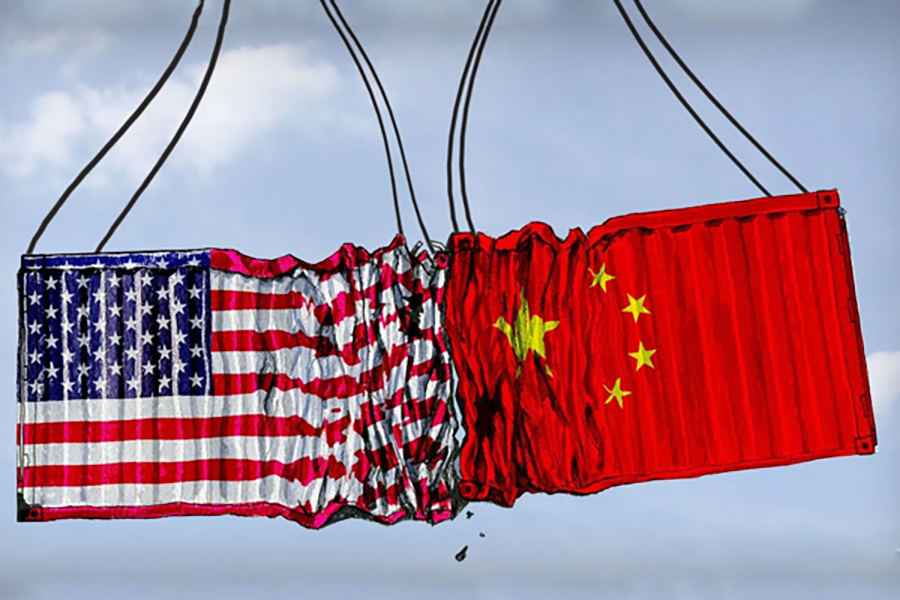FTP 2023: Could District Export Hubs be game changers?
The Foreign Trade Policy, released on 31st March 2023, introduced several goals (including District Export Hubs) that the government is planning to achieve, in particular a target of US$ 2 trillion worth of exports by 2030. To kick start the process, the government has highlighted and pushed the District as Exports Hubs (DEH) initiative.
The DEH focuses on making the Indian districts self-reliant in the areas of technology, logistics, craft, etc. with an ultimate aim to enhance the total exports from India.

Image Credit: Shutterstock
Announced on March 31, 2023, the new Foreign Trade Policy (FTP) went beyond its usual 5-year timeline due to the onset of the pandemic in 2020. The policy focused on a number of key areas ranging from e-commerce to logistics. Another major highlight of the FTP is boosting Districts Exports Hubs in order to uplift different districts, their products and exports value.
Since the new FTP is focused on India’s objective of reaching US$2 trillion in exports by 2030, the role of MSMEs and local artisans from various districts is expected to play a crucial role in achieving this target. According to the announcement, the central government will identify nearly 100 districts all over India and develop them into export hubs using a “bottom-up approach”.
Santosh Kumar Sarangi, Director General of Foreign Trade stated, “The idea behind the initiative is to involve more youngsters at the district level, such as collectors, so that they view export boosting as a core rather than peripheral function.” He added that the export programme includes both goods and services, unlike the “One District One Product” Initiative.
DEH Explained
The “District Export Hubs” initiative was launched after Prime Minister Narendra Modi highlighted, in his speech, the need to channelise the unique potential of each district and convert them into export hubs in the year 2019. The FTP 2023 further highlighted the execution roadmap for the same:
- Identifying products and services with export potential in the district along with addressing bottlenecks for exporting these products/services.
- Attract investments to boost manufacturing and exports in districts.
- Supporting local exporters and manufacturers to help scale and find potential buyers outside India.
- Empower MSMEs, farmers, and small-scale industries to get the benefit of export opportunities in the overseas markets.
- The initiative will help generate new job opportunities
- It aims to provide an ecosystem and use technology at the export level making the districts export competitive.
Plan of Action
The District Export Action Plan notified by the District Export Promotion Committee in each District may include – clear identification of products (goods and services) with export potential in the district including implementation of various tasks. Some of the key action plans initiated by the government are listed below:
- District Export Promotion Committees (DEPC): Products and services with export potential in each district have to be identified and institutional mechanisms in the form of DEPCs at the district level to provide support for export promotion and address the bottlenecks for export growth in districts.Each DEPC will be chaired by the Collector/DM/DC of the district and co-chaired by a designated DGFT Regional Authority with various other stakeholders. The primary function of the DEPC will be to prepare and implement district-specific Export Action Plans.
- District Export Action Plans (DEAP): The DEAP may be prepared for each district export hub where 2-3 high-potential products/services from the districts may be prioritized and a comprehensive plan for their export growth may be prepared. Each DEAP may be deliberated by the DEPC before it is formally adopted by the DEPC of each district.
- State/UT Export promotion committees: Each state shall constitute a State Export Promotion Committee (SEPC) which will be headed by the Chief Secretary of the State to synergize the efforts of the Department of Commerce/DGFT and the State/UT governments in the promotion of exports from the state.
- Nodal DGFT Regional Authority: Districts of the States/UTs have been assigned to the Jurisdictional DGFT Regional Authority and the nodal RA shall be responsible for the districts under their jurisdiction for all the activities related to the DEH initiative.
- Online Monitoring of District Export Action Plans: DGFT would develop an online monitoring portal that may be accessed on the DGFT website to enable the States/DGFT RAs to upload all information related to the product/services with export potential of every district.
- Export Promotion Activities in Districts: Buyer-seller meets, trade fairs, workshops, etc will be organized in each district. DGFT’s RAs through DEPCs may facilitate such buyer-seller meets, exhibitions, trade fairs, etc to encourage the industries to showcase their products/services to the world.
With the District Export Hub initiative, the government aims to enable MSMEs, farmers, and small industries to benefit from export opportunities in the overseas markets and shift focus on District-led Export Growth for self-sufficiency and self-reliance. This would further attract investment in the District to boost manufacturing and exports and provide an ecosystem for Innovation/use of Technology at the district level to make the exporters competitive.
Read more about the Foreign Trade Policy Here:













Leave a comment